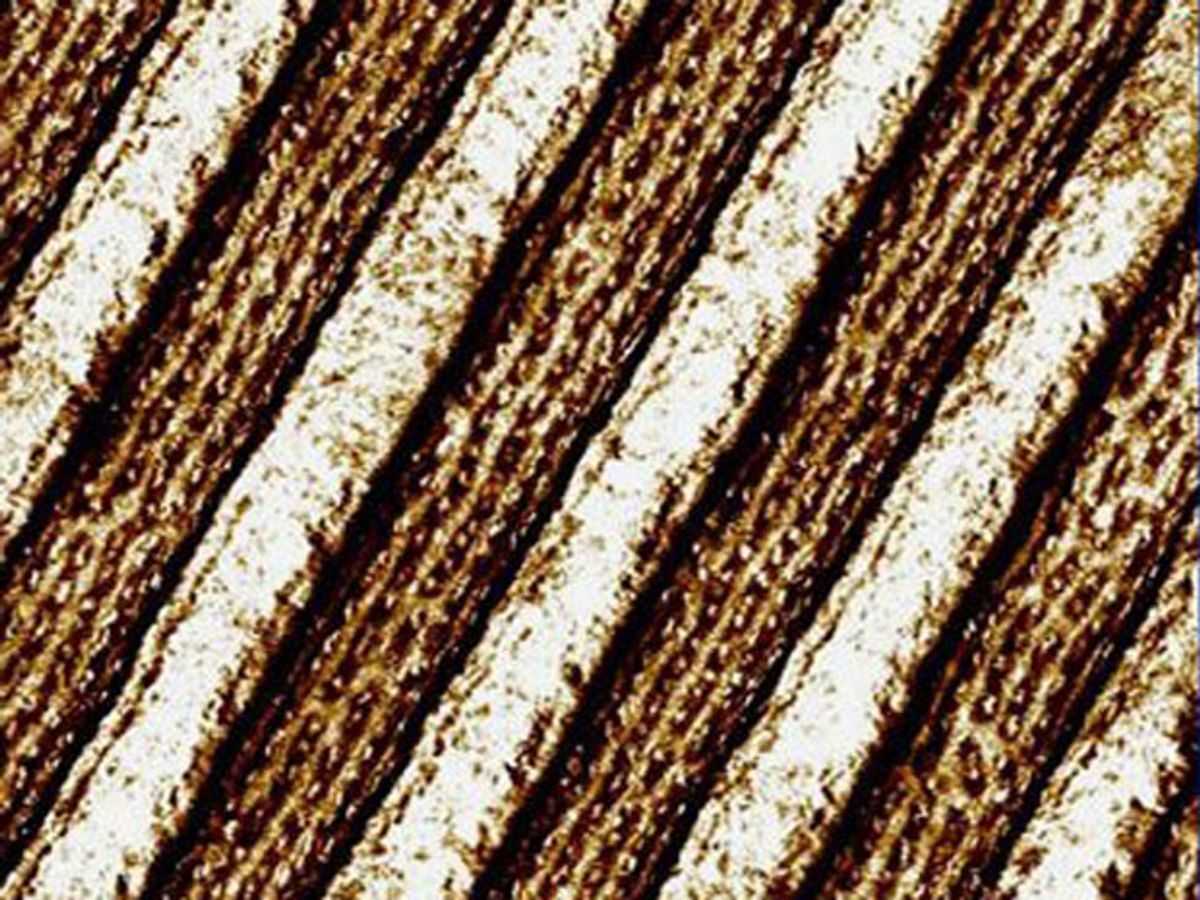Prior to this work, it would take hours for nanoparticles to self assemble into a film that was just barely able to cover a microscopic chip. Now a film covering a full-sized silicon wafer can assemble itself in just a few minutes.
Because this new technique should be compatible with today's manufacturing processes, the Berkeley Lab researchers believe that it could lead to new types of optical coatings for applications in photovoltaics and data storage.
“You can think of it as pancake batter that you can spread over a griddle, wait one minute and you have a pancake ready to eat,” said Ting Xu, a polymer scientist with Berkeley Lab’s Materials Sciences Division, in a press release.
It is, of course, not pancake batter, but block copolymer-based supramolecular solutions that direct the self-assembly of the nanoparticles. A supramolecule is actually a number of different molecules that are combined together to act as a single molecule and carry out a particular programmed function. Block copolymers are sequences of one type of monomer (a molecule that binds to other molecules to form a polymer) that are bound to sequences of another monomer and have the ability to self assemble into defined arrays of nanostructures covering macroscopic areas.
The International Technology Roadmap for Semiconductors predicted as early as 2007 that block copolymers will be a needed to make the next generation of computing. Eighteen months ago, researchers at the University of Texas Austin in collaboration with disk drive company HGST exploited the directed self assembly of block copolymers to create a new type of disk drive with up to five times the storage capacity of today’s models.
“Block copolymer-based supramolecules self-assemble and form a wide range of morphologies that feature microdomains typically a few to tens of nanometers in size,” Xu said in the press release. “As their size is comparable to that of nanoparticles, the microdomains of supramolecules provide an ideal structural framework for the self-assembly of nanoparticle arrays.”
In research published in the journal Nature Communications, Xu and her colleagues developed a technique by which arrays of gold nanoparticles are incorporated into solutions of supramolecules to form films that were about 200 nanometers thick. A process known as solvent annealing (chloroform was used as the solvent) was employed to organize the nanoparticle arrays into three-dimensional cylindrical microdomains. These 3-D microdomains then packed themselves into distorted hexagonal lattices and placed themselves in parallel with the surface.
Lately, researchers around the world have been achieving increasing control over the structure of the nanoparticle self-assembly. What really sets the Berkeley Lab work apart from others was the speed at which they were able to get this precise self-assembly. The trick was to carefully regulate the amount of solvent that was used in the annealing process.
“By constructing our block copolymer-based supramolecules from small molecules non-covalently attached to polymer side chains, we changed the energy landscape so that solvent content became the most important factor,” Xu says. “This enabled us to achieve fast-ordering of the nanoparticle arrays with the addition of only a very small amount of solvent, about 30-percent of the fraction of a 200 nanometer thick film.”
While the gold nanocomposite thin films that were produced through this quick self-assembly have particular attractive optical properties, the supramolecular approach they developed could be used with a variety of different nanoparticles resulting in a library of thin films each with its own optical properties.
Dexter Johnson is a contributing editor at IEEE Spectrum, with a focus on nanotechnology.




